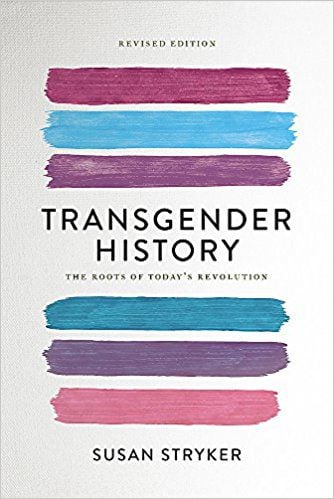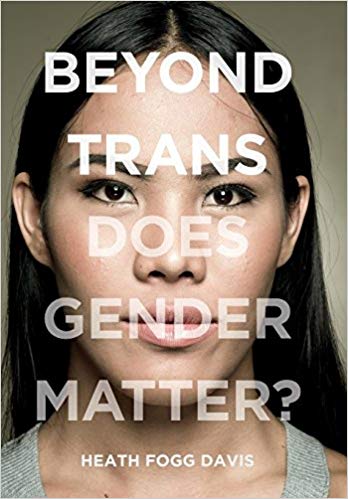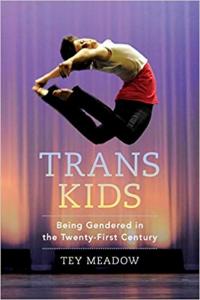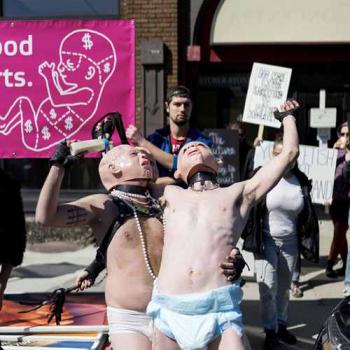The Genderbread Person is a playful but serious graphic attempt to visualize the four broad spectrums of gender identity, gender expression, biological sex, and sexual attraction. One of the most important aspects of this chart is that the four different attributes are on non-intersecting lines. In other words, where an individual identifies on one line does not tell you how they identify on another line. That also means that people express gender and sexuality through many different possible combinations.
To offer a brief overview, starting at the top of the chart:
- Gender Identity is in your mind: internally, do you think of yourself as more of a “woman,” a “man,” or somewhere in between? The key caveat here is that our notions of what words like “women” and “men” mean depend on the culture in which we were raised.
- Gender Expression is the dotted line: externally in your clothes and behavior, do you present yourself to others as “masculine,” “feminine,” androgynous, or gender fluid? Again, keep in mind that our perceptions of categories like “masculine” and “feminine” are socially constructed.
- Attraction: in your heart, are you are sexually (and/or romantically) attracted to men/males/masculinity, women/females/femininity, both, or neither?
- Biological Sex is more complicated than whether your chromosomes are XY-male or XX-female. For instance, “If you ask experts at medical centers how often a child is born so noticeably atypical in terms of genitalia that a specialist in sex differentiation is called in, the number comes out to about 1-in-1500 to 1-in-2000 births. But a lot more people than that are born with subtler forms of sex anatomy variations, some of which won’t show up until later in life” (Davis 33).
I encourage you to spend a few minutes studying The Genderbread Person chart. It’s both fascinating and illuminating.
More broadly, what does all this mean for being gendered in the twenty-first century? Part of what it means is that although many official forms limit individuals to checking the boxes of either of two genders (male or female), increasing numbers of people identify outside a simple gender binary:
- More than four years ago, Facebook began offering more than fifty custom gender options for describing one’s gender presentation.
- The dating app Tinder lists thirty-seven gender options.
- Oregon, Maine, and Washington, D.C. already allow a third gender category on driver’s licenses” (Meadow 5), and
- “At least 10 countries — Australia, Bangladesh, Canada, Denmark, Germany, India, Malta, Nepal, New Zealand and Pakistan — offer gender-neutral options on passports or national identity cards.”
More options along these lines are appearing frequently.
I first began to reflect on these issues critically through reading the philosopher Judith Butler’s (1956 – ) writing about “gender performativity.” Similar to the Genderbread Person, Butler highlights that there is not a direct correlation between knowing someone’s biological sex and knowing their gender (Meadow 26).
But long before an individual can choose for themselves, there are many cultural forces in our society dedicated to encouraging biological girls to wear pink frilly dresses, play with dolls and toy kitchens, and express all their emotions except anger. Likewise, similar social constructs encourage biological boys to wear pants and the color blue, to play with cars and tools, to be tough, and to control their emotions except anger, of course, which we saw disturbingly demonstrated the recent Supreme Court confirmation hearings.
The good news is that there is a growing conversation about alternative paths forward. About two weeks ago, for instance, there was an article in The Washington Post titled “Was their child a boy or a girl? Naya’s parents wanted to let Naya decide.” Naya’s parents chose not to publicly share the sex listed on their child’s birth certificate. One could make the argument that, if you think about it, it is kind of odd that people are so interested in knowing the details of a newborn’s below-the-belt anatomy. But Naya’s parents would instead respectfully request, “If you interact with our kid, please make an effort to use Naya’s name, rather than a gendered pronoun.” And they gave Naya clothes and toys from both sides of the gender-segregated aisles at most stores.
Around age three, Naya was playing with a gender non-specific stuffed animal and unexpectedly told one of her parents that, “Doggy is a boy — “a he” — and he should be called that.” Sensing that this conversation was about more than a toy, her father gently prompted, “What do you want me to call you?” Naya replied nonchalantly, “She and her and a girl.” Even after that conversation, Naya’s parents still don’t talk about what’s on the birth certificate. Their hope is to continue to give Naya the freedom to explore and discover who she is. And they are open to more conversations in the future. (There was a related article in The New York Times a few days ago on “Male, Female or ‘X’: The Push for a Third Choice on Official Forms” that mentioned a gender-open playgroup in Brooklyn that includes at least four ‘theybies’”—babies who parents refer to them using the pronoun they.)
 And as excited as I am to see these signs of a more gender-liberated future, there are times that discussions around transgender awareness give the misleading impression that these issues are new, which is very much not the case. Drawing from the excellent overview Transgender History: The Roots of Today’s Revolution by Susan Stryker (Seal Press, 2nd edition, 2017), I will limit myself to three quick jumps through history,
And as excited as I am to see these signs of a more gender-liberated future, there are times that discussions around transgender awareness give the misleading impression that these issues are new, which is very much not the case. Drawing from the excellent overview Transgender History: The Roots of Today’s Revolution by Susan Stryker (Seal Press, 2nd edition, 2017), I will limit myself to three quick jumps through history,
- In the late seventeenth century, we have records of the colony of Massachusetts passing laws against cross-dressing. In general, it is strong evidence that something is happening if people are passing laws to stop it. (46).
- Skipping to the nineteenth century one major theme in First Wave Feminism was asserting the rights of women to wear pants. Many suffragettes argued that, “long skirts and cumbersome undergarments were a form of bondage” holding women back from reaching their potential (50).
- Or looking to the twentieth century, long before Caitlyn Jenner, some of you will remember that on December 1, 1952, Christine Jorgensen “made international headlines with news of her successful genital transformation surgery in Copenhagen…. In a year when hydrogen bombs were being tested in the Pacific, war was raging in Korea, England had crowned a new queen, and Jonas Salk was working on the polio vaccine, Jorgensen was the most written-about topic in the media in 1953” (65).
The movement for gender liberation has a long and fascinating history.
Looking to our own time, it is significant to note that:
- In 2010 the U.S. Department of State issued a new passport policy, in effect allowing parents to change the legal gender of their minor children. Because passports are so-called “breeder documents,” they can be used to change state identification, school records, health records, and more….
- Endocrinologists now widely recommend the use of puberty-inhibiting hormone therapies for transgender adolescents;
- Medicare lifted its ban on coverage for transgender health care;
- In 2013, the 5th edition of the Diagnostic and Statistical Manual debuted a new version of its clinical diagnostic criteria for “gender dysphoria,” which limited the diagnosis to individuals experiencing “clinically significant distress” about their gender (rather than applying the diagnosis only to transpeople) and separated gender into a category wholly apart from sexuality; and
- As of last year, thirteen states had enacted laws prohibiting discrimination based on gender identity or expression in schools…and hundreds of school districts around the country have instituted similar policies on a local level. (Meadow 3-4)
 Looking to the future, four promising areas of potential change related to the gender liberation movement include bathrooms, identity documents, same-sex colleges, and athletics. All are explored in Heath Fogg Davis’s fascinating book Beyond Trans: Does Gender Matter? (NYU Press, 2017).
Looking to the future, four promising areas of potential change related to the gender liberation movement include bathrooms, identity documents, same-sex colleges, and athletics. All are explored in Heath Fogg Davis’s fascinating book Beyond Trans: Does Gender Matter? (NYU Press, 2017).
- Bathrooms: I suspect many of you have noticed a growing number of gender-neutral bathrooms. This trend may lead a paradigm shift toward “universal design” in bathrooms in public spaces, which increasingly will be bathrooms any human being could use. For such “universal designs,” the walls of individual stalls would be extended “all the way, or closer, to the floor” (Davis 80-83). One of the obvious advantages of having universally-accessible public restroom would be ending the disparity of long lines to the women’s room and short lines to the men’s room.
- Identity documents: Many cisgendered folk (those whose gender identity corresponds to their biological sex) are unfamiliar with the history of authorities harassing and abusing people who do not appear to conform to the gender listed on their identity documents (Meadow 142). For anyone with libertarian instincts, it can be fairly easy to get support for the argument that what’s below your belt is not any of the government’s business. Moreover, there is already a precedent for eliminating gender-markers on identity documents: the Civil Rights movement blazed a similar path in lobbying to remove race-markers from birth certificates and driver’s licenses (Davis 37).
- Same-sex colleges – In a more gender-liberated world, one way forward would be to rename same-sex colleges as “historically men’s colleges” or “historically women’s colleges.” To honor that historic identity at a historically women’s college, for instance, prospective students, regardless of sex identity, might be accorded preferential acceptance consideration based on their “personal commitments to an institutional value of feminism” (143).
- Athletics – While professional athletics might continue to be primarily gender segregated, it would be fairly easy to move toward less competitive play and gender-inclusive teams for younger athletes.
 Regardless of how we decide to collectively move forward, I don’t want us to miss the heart of the matter. In my research, two of the books I read had strikingly similar dedications. In the first one, the author’s dedication read, “For my kids.” In the other book, it said, “To all the kids who are different and the adults who ease their way.” As Tey Meadow details in her important book Trans Kids: Being Gendered in the Twenty-First Century (University of California Press, 2018), when the history of the gender liberation movement in our time is written, I hope to be among those unnamed people who helped ease the way for other human beings seeking nothing more than the freedom to discover and explore their authentic self (175).
Regardless of how we decide to collectively move forward, I don’t want us to miss the heart of the matter. In my research, two of the books I read had strikingly similar dedications. In the first one, the author’s dedication read, “For my kids.” In the other book, it said, “To all the kids who are different and the adults who ease their way.” As Tey Meadow details in her important book Trans Kids: Being Gendered in the Twenty-First Century (University of California Press, 2018), when the history of the gender liberation movement in our time is written, I hope to be among those unnamed people who helped ease the way for other human beings seeking nothing more than the freedom to discover and explore their authentic self (175).
The Rev. Dr. Carl Gregg is a certified spiritual director, a D.Min. graduate of San Francisco Theological Seminary, and the minister of the Unitarian Universalist Congregation of Frederick, Maryland. Follow him on Facebook (facebook.com/carlgregg) and Twitter (@carlgregg).
Learn more about Unitarian Universalism: http://www.uua.org/beliefs/principles
















